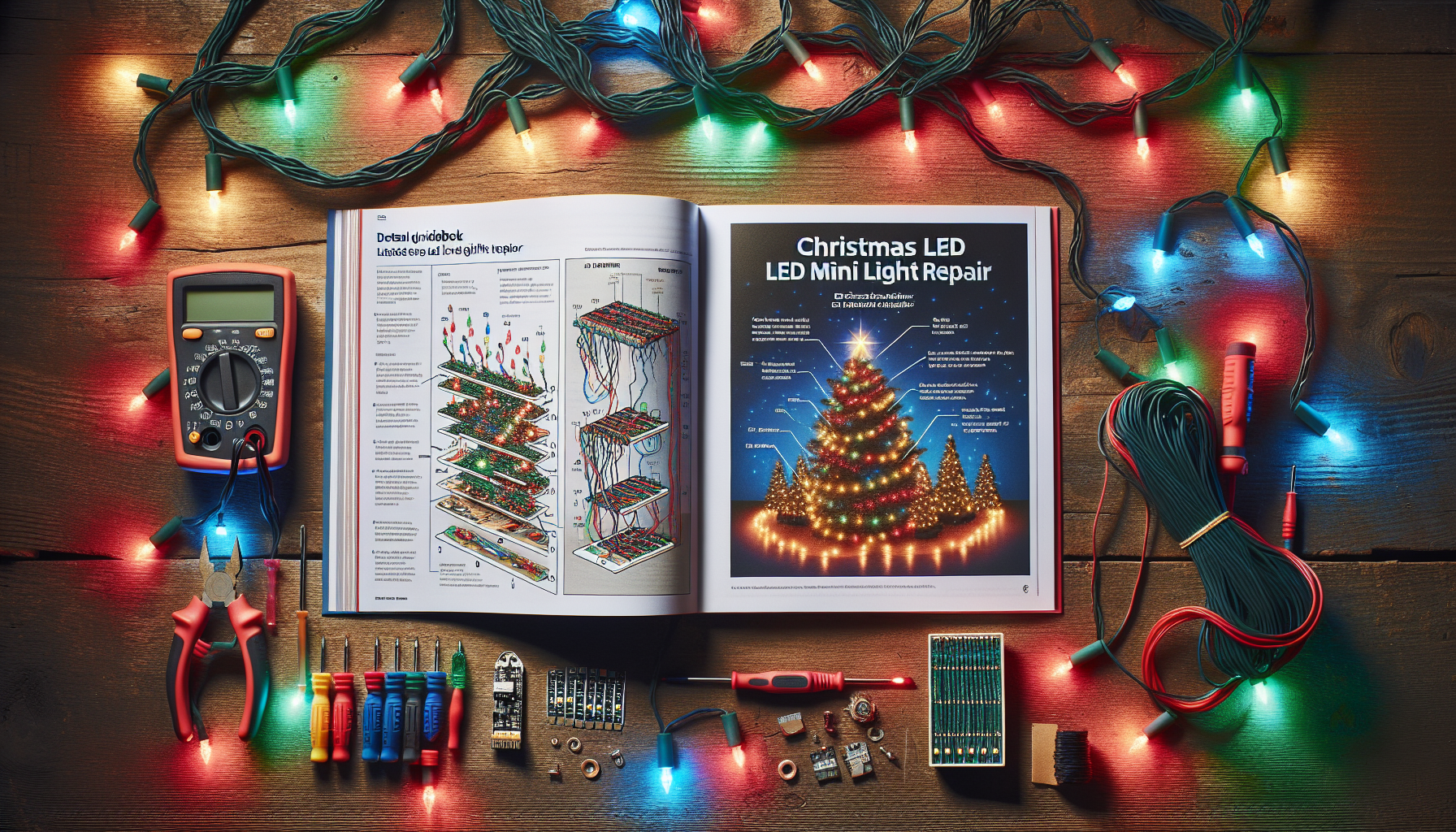Table of Contents
- Diagnosing and Repairing Blown Rectifiers in LED Lights
- Understanding the Anatomy of LED Mini Lights
- Diagnosing a Blown Rectifier
- Step-by-Step Repair Process
- Preventing Future Rectifier Failures
- FAQ
Diagnosing and Repairing Blown Rectifiers in LED Lights
As the holiday season approaches, homeowners and businesses alike strive to create a festive atmosphere with dazzling Christmas light displays. However, when those twinkling lights start to dim or go out altogether, it can quickly dampen the holiday cheer. Fortunately, with the right knowledge and a bit of troubleshooting, you can restore your lighting displays to their former glory, just like a professional.
In this comprehensive guide, we’ll dive into the common issue of blown rectifiers in LED mini lights and walk you through the step-by-step process to diagnose and repair this problem. Whether you’re a seasoned DIYer or a homeowner tackling your first lighting project, this information will empower you to fix your Christmas lights like a pro.
Understanding the Anatomy of LED Mini Lights
LED mini lights, often used in holiday lighting displays, are a popular choice due to their energy efficiency, long lifespan, and vibrant illumination. However, these delicate strands can be susceptible to various issues, including the dreaded blown rectifier.
The rectifier is a crucial component within the LED mini light system, responsible for converting the alternating current (AC) from the power source into the direct current (DC) required by the LEDs. When the rectifier becomes damaged or overloaded, it can cause the entire strand or section of lights to stop working, leaving unsightly dark spots in your display.

Diagnosing a Blown Rectifier
Identifying a blown rectifier is the first step in the repair process. Here are the signs to look for:
- Partial Strand Failure: If only a portion of the light strand is not working, while the rest of the strand is functioning correctly, it’s a strong indicator of a blown rectifier.
- Dimming or Flickering Lights: If the lights in a particular section are flickering or appear dimmer than the rest of the strand, it could be a sign of a failing rectifier.
- Completely Dark Strand: In some cases, a completely dark or non-functioning strand may point to a blown rectifier that has caused a complete loss of power to that section.
Step-by-Step Repair Process
Once you’ve identified the issue, follow these steps to repair the blown rectifier and restore your Christmas lights to their former glory:
- Unplug the Affected Strand: Safely disconnect the non-functioning strand from the power source to prevent further damage.
- Isolate the Problem Area: Carefully inspect the strand, starting from the first working light, and follow the strand until you reach the point where the lights stop working. This will help you identify the specific section with the blown rectifier.
- Test the Strand: Plug in the affected strand to confirm that it is indeed the issue. If the rest of the strand works when plugged in, you can be certain that the problem lies within the non-functioning section.
- Remove the Damaged Strand: Carefully detach the problematic strand from the rest of the lighting display, ensuring you don’t damage any surrounding lights or connections.
- Discard the Faulty Strand: It’s important to properly dispose of the damaged strand to prevent it from being used again and potentially causing further issues on future installations.
- Install a Replacement Strand: Replace the faulty strand with a new, high-quality mini light set to restore the lighting display to its full functionality.
Preventing Future Rectifier Failures
To minimize the risk of recurring rectifier issues, consider the following tips:
- Use Professional-Grade Lights: Invest in commercial-grade mini lights that are designed to withstand the elements and provide reliable performance, even in challenging outdoor conditions.
- Proper Installation Techniques: Carefully follow the manufacturer’s instructions for installation, ensuring the lights are properly secured and protected from moisture and other environmental factors that can contribute to rectifier failure.
- Regular Maintenance: Inspect your Christmas light displays periodically, checking for any signs of damage or wear and tear that could lead to future issues. Promptly address any problems to prevent further complications.
FAQ
How can I tell if a rectifier is blown?
The primary signs of a blown rectifier include partial strand failure, dimming or flickering lights, and completely dark strands. If you notice any of these issues, it’s likely that the rectifier has been damaged and needs to be repaired or replaced.
Can I replace just the rectifier, or do I need to replace the entire strand?
In most cases, it’s not practical to replace just the rectifier, as the component is typically integrated into the light strand. The best course of action is to replace the entire affected strand with a new, high-quality mini light set.
How can I prevent rectifier failures in the future?
To minimize the risk of rectifier failures, use professional-grade Christmas lights, follow proper installation techniques, and regularly inspect and maintain your lighting displays. Addressing any issues promptly can help ensure your holiday lights continue to shine brightly for years to come.
What should I do with the damaged strand?
It’s important to properly dispose of the faulty strand to prevent it from being used again and potentially causing further issues. Do not attempt to reuse the damaged strand, as it could lead to safety hazards or additional repair costs down the line.
How long does it typically take to repair a blown rectifier?
The time required to repair a blown rectifier can vary depending on the complexity of the issue and the size of the lighting display. However, with the right troubleshooting skills and a bit of experience, most professional-level repairs can be completed in an hour or less.
By mastering the art of diagnosing and repairing blown rectifiers in LED mini lights, you’ll be well on your way to maintaining a dazzling holiday lighting display that will impress your neighbors and spread joy throughout the season. Happy holidays!


